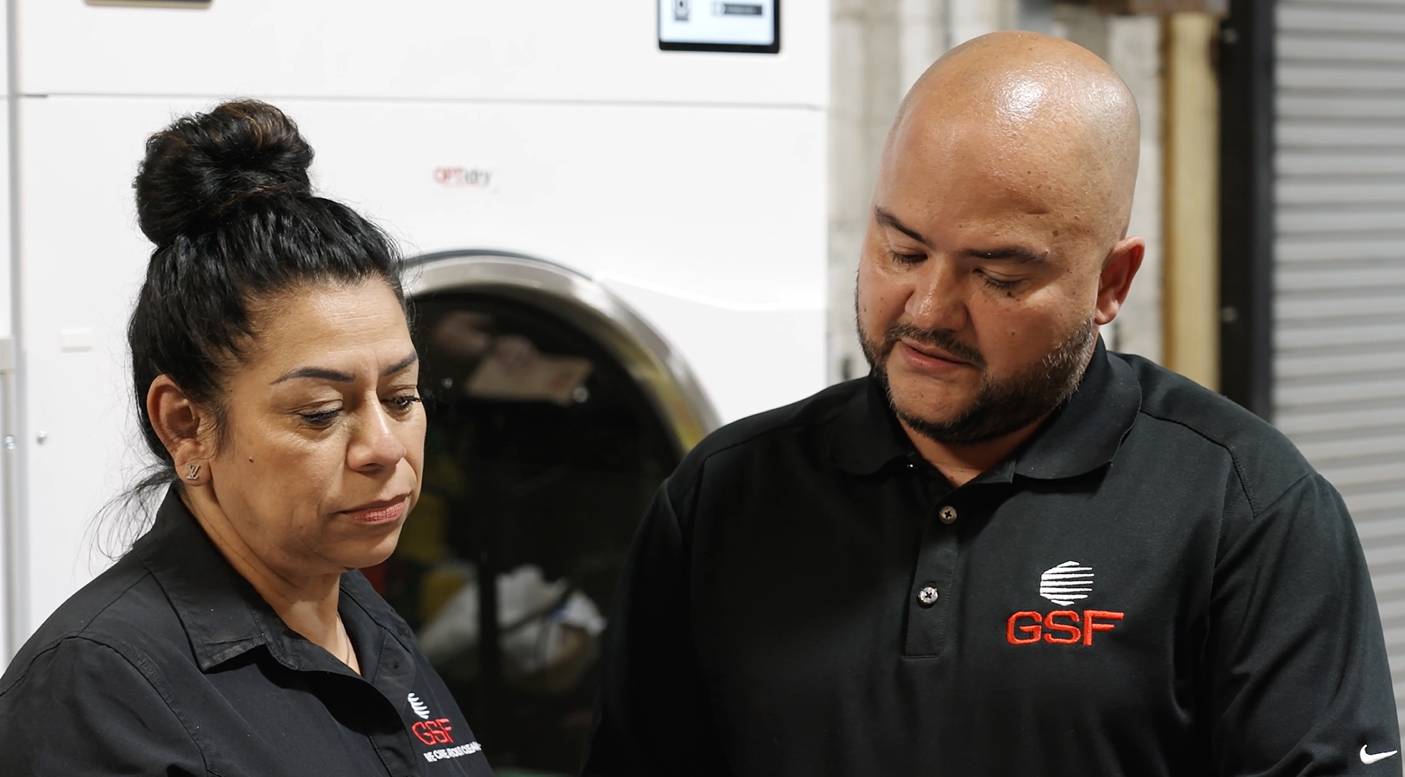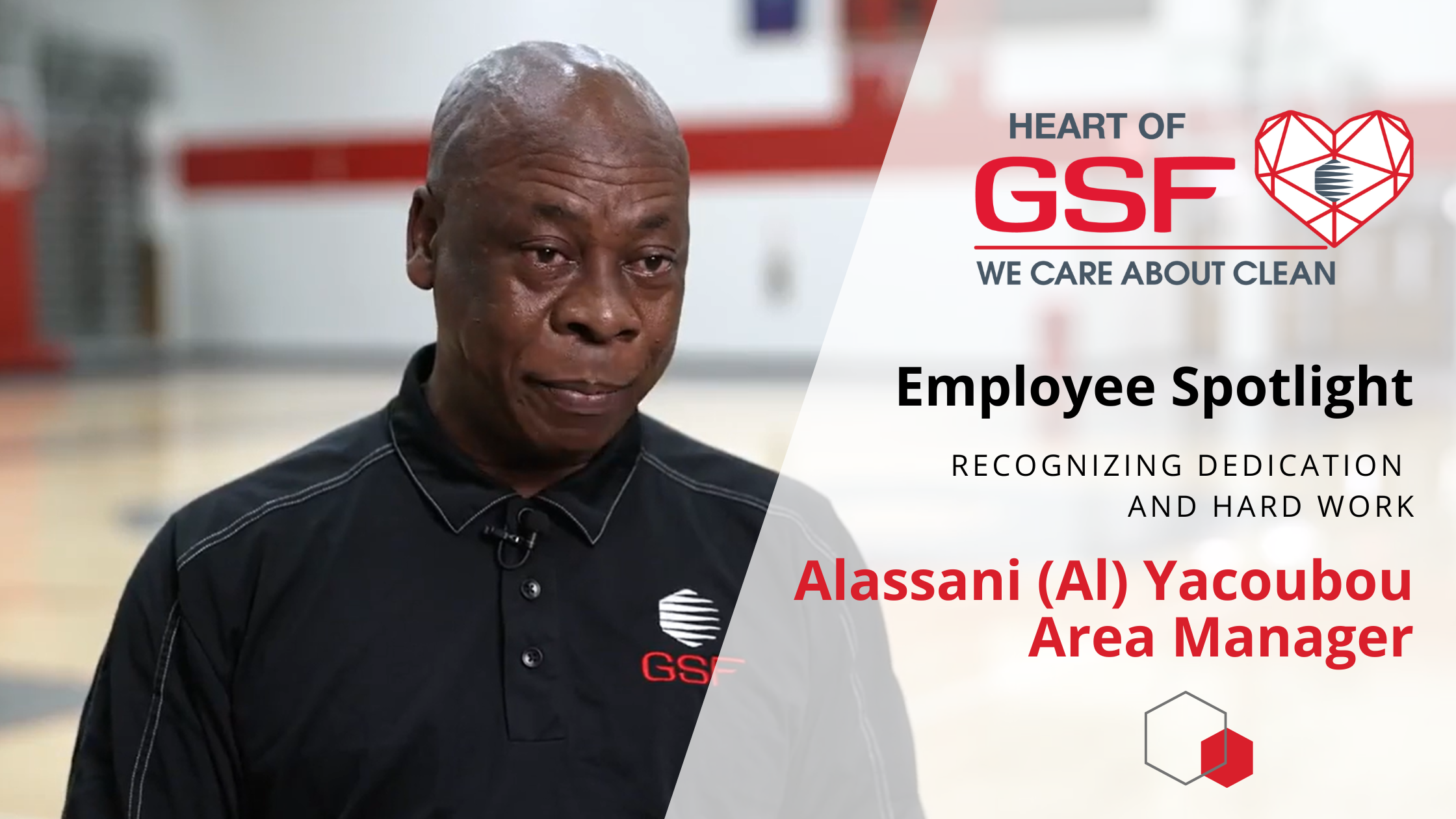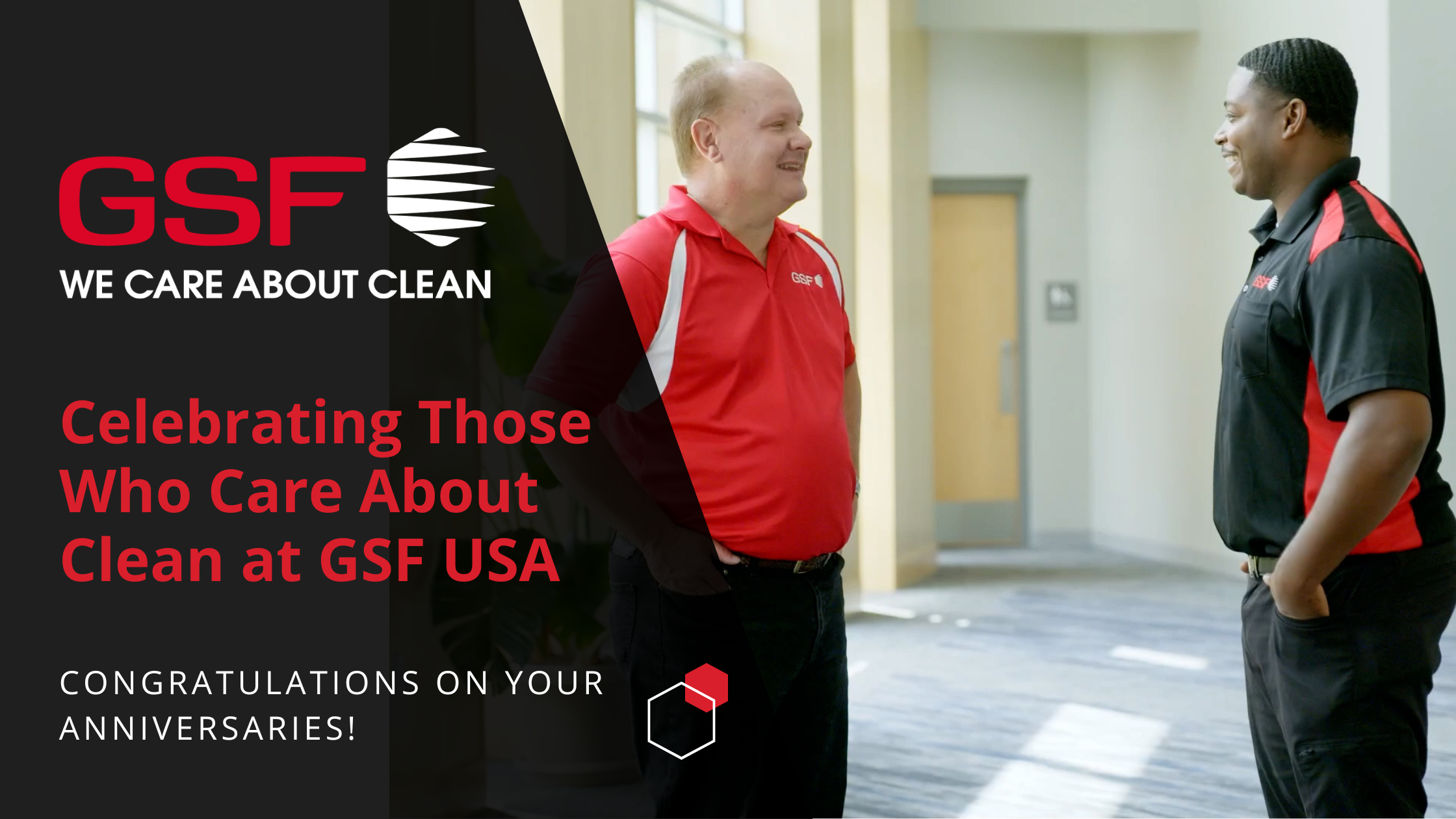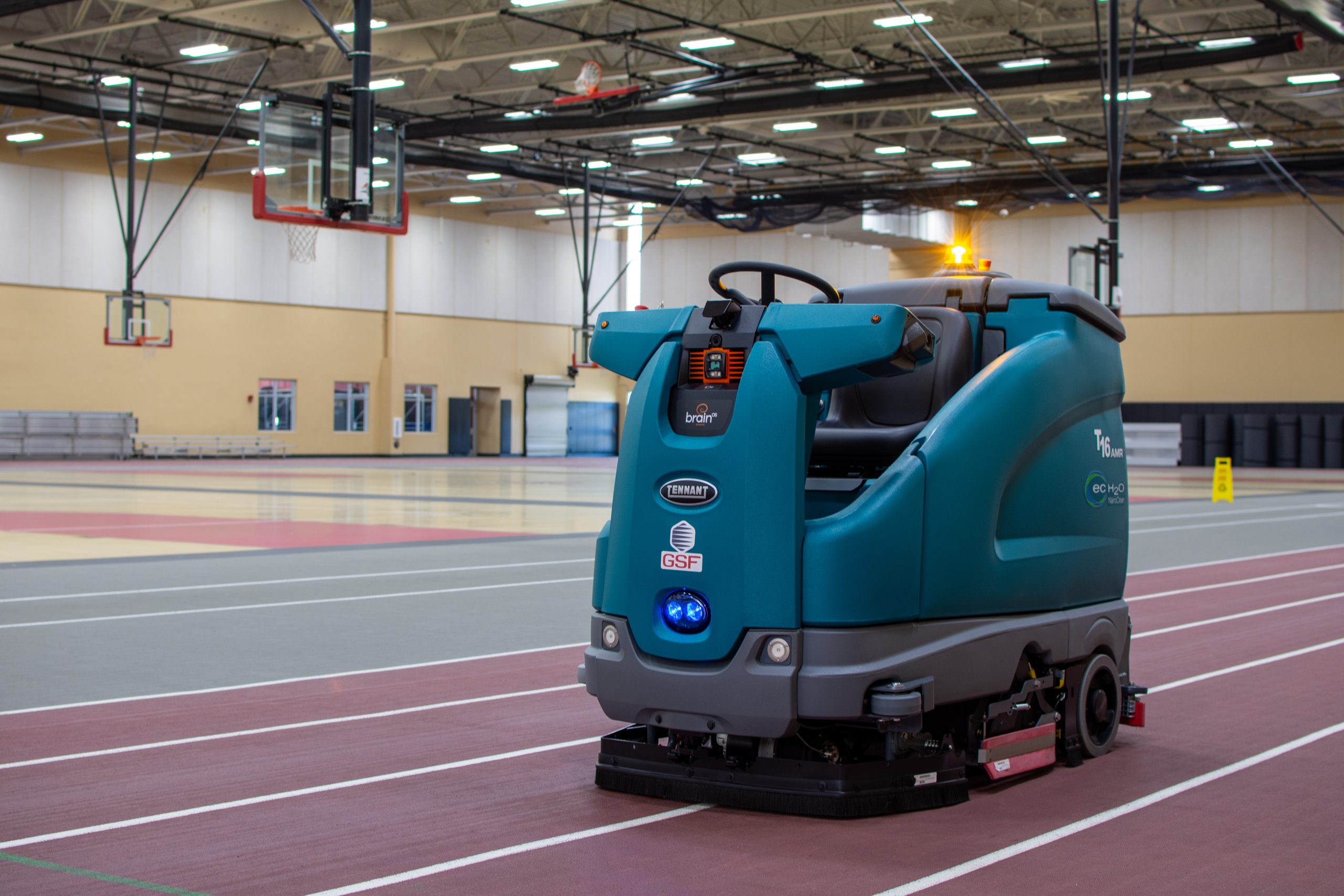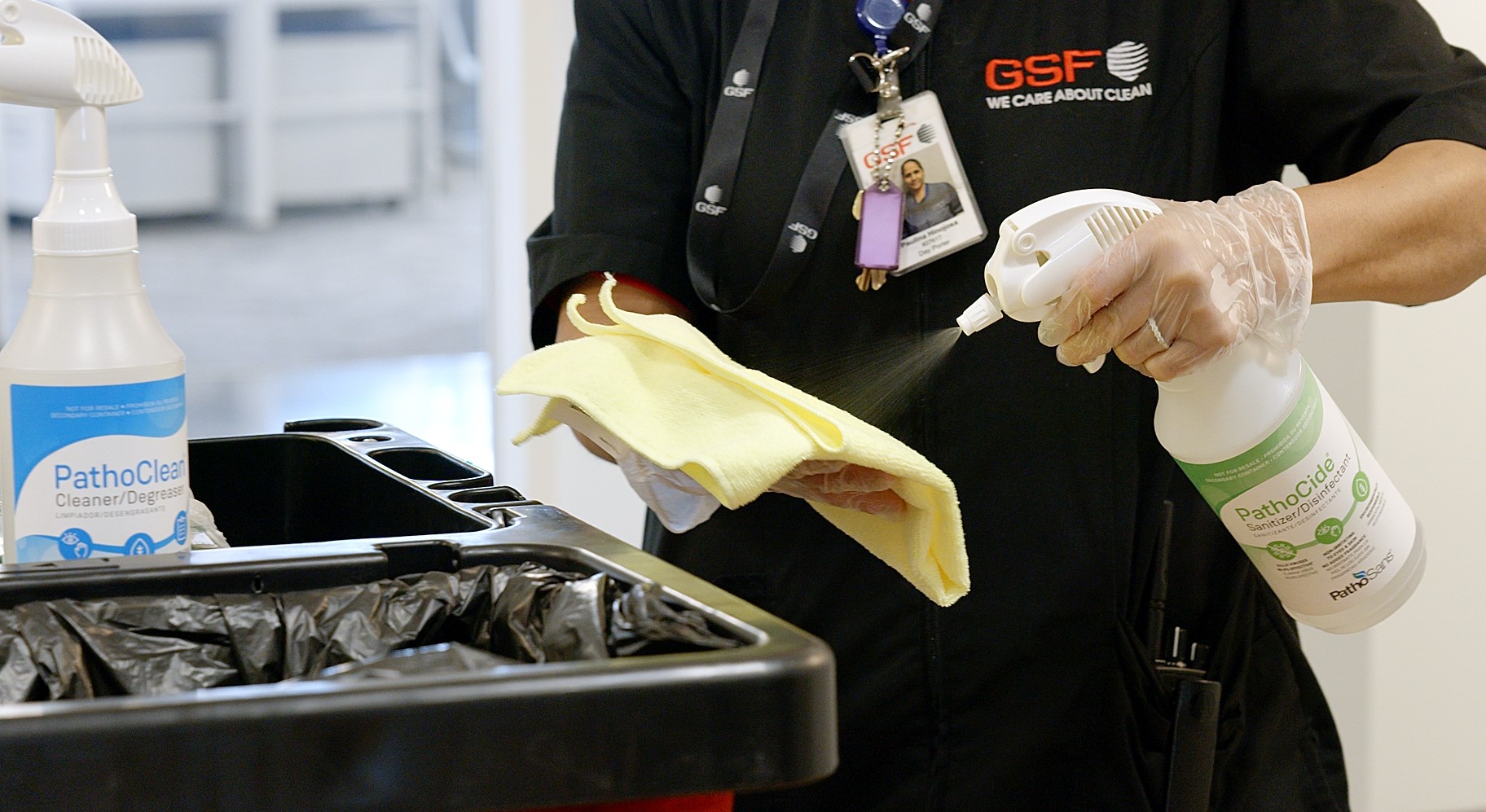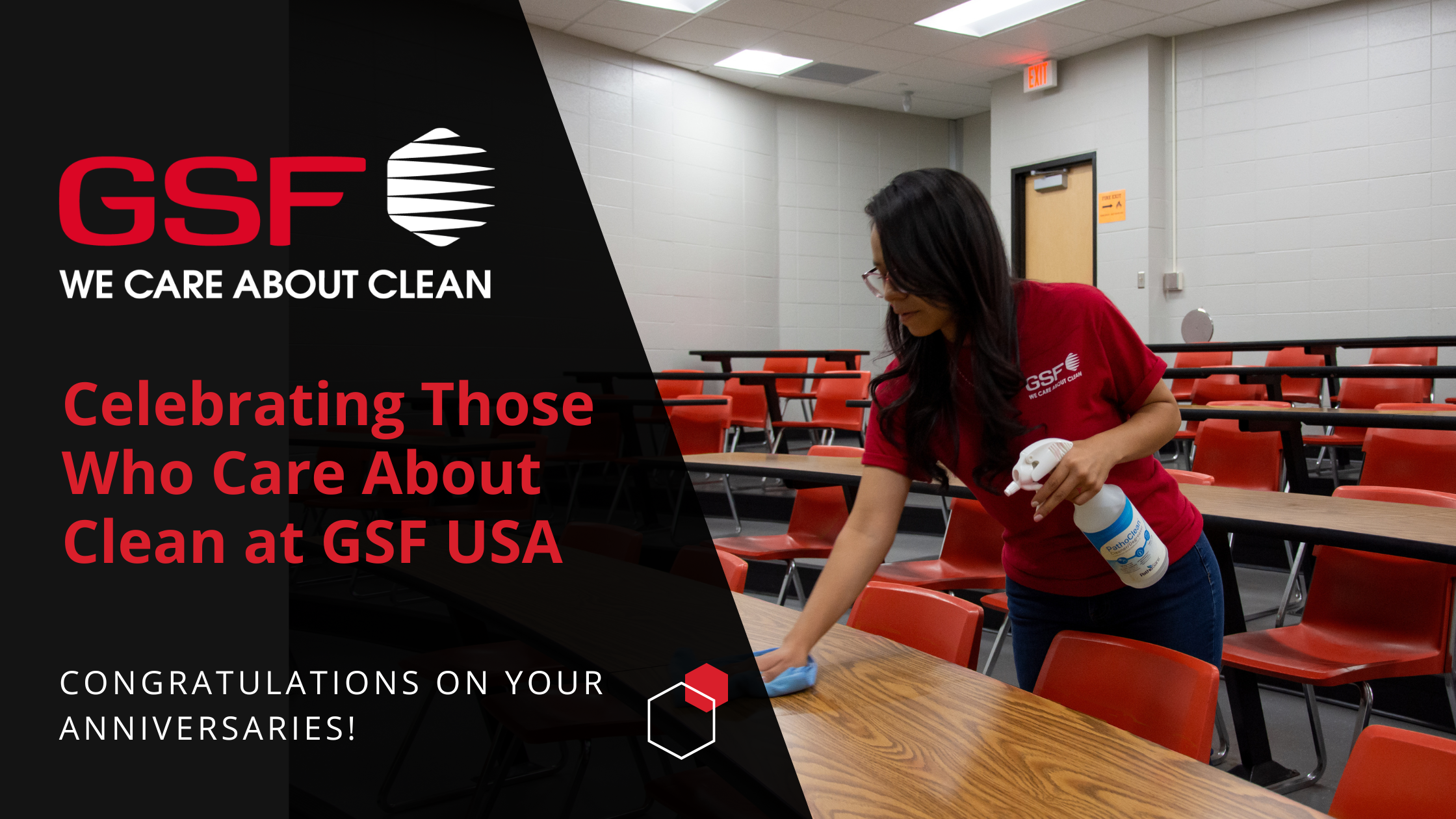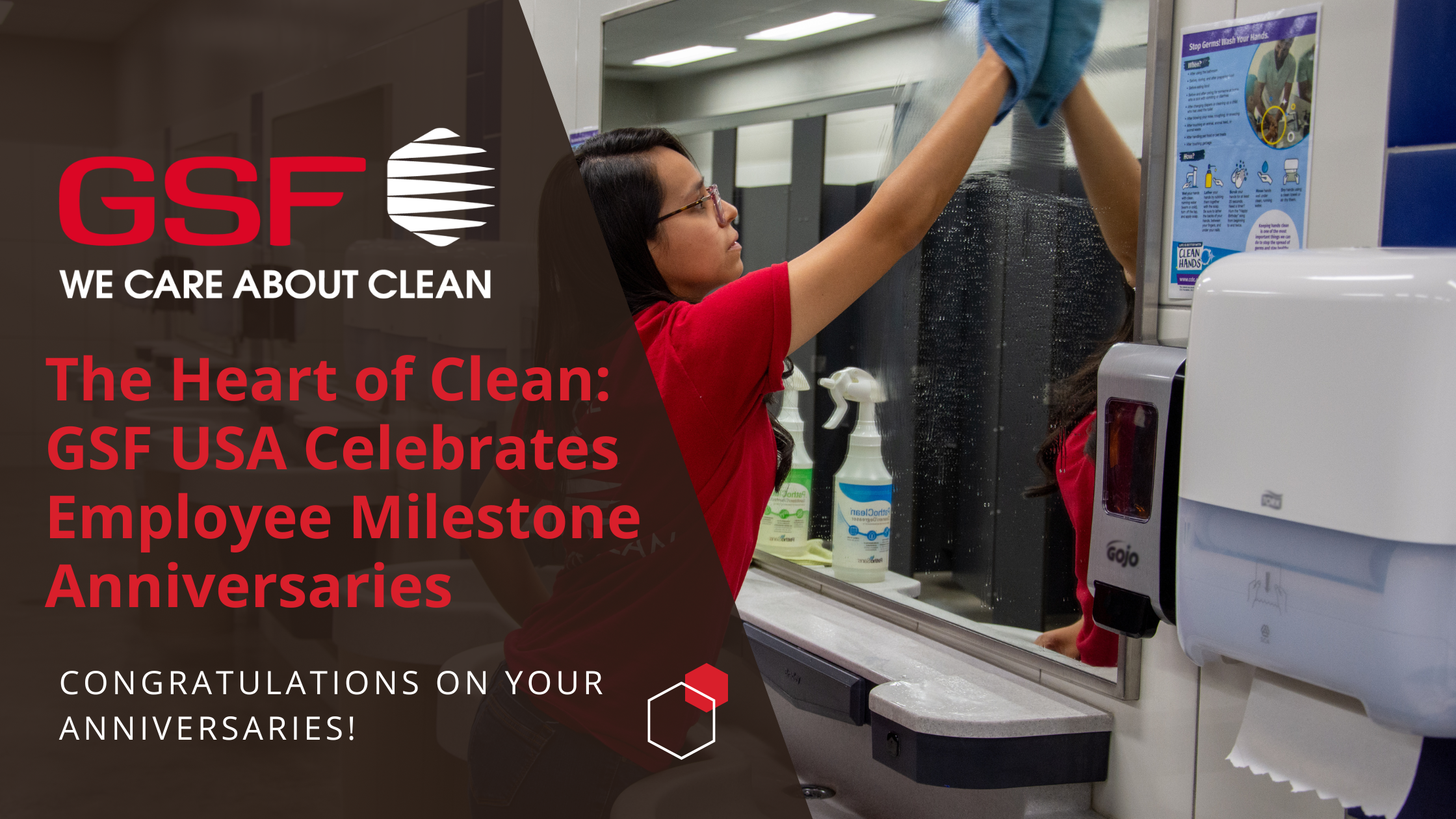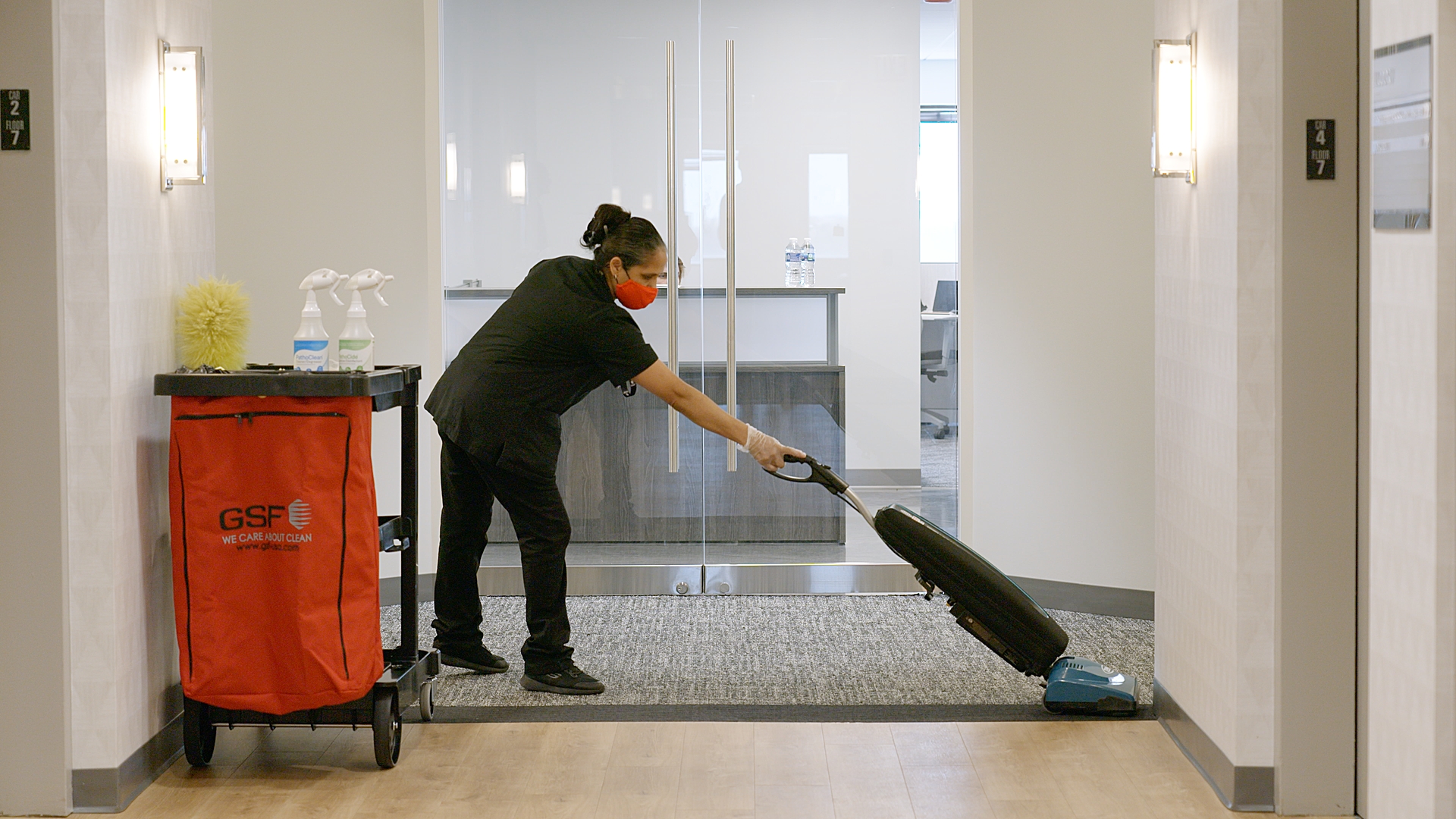BACKGROUND
An increasing number of schools are replacing carpet flooing with luxury vinyl tile (LVT) and other low maintenance flooring in an effort to reduce maintenance, repair and associated costs. LVT is attractive to schools because it is marketed as requiring little to no upkeep, but the reality is that the flooring develops scuffs, scratches, and wear over time. Traditional flooring cleaners and treatments will not resolve these issues. Finding innovative solutions to these types of problems is a primary aim for both Ecolab and GSF USA, Inc, a global cleaning services company. Ecolab and its distributor partners have served as GSF’s primary chemical providers for more than five years, delivering tools, training, expertise and products that have forged a strong relationship and created positive outcomes for GSF customers.
SITUATION
Soon after schools within the districts that GSF serves began installing LVT flooring, the company noticed recurring dirt and wear in certain areas. “Everybody thinks that there’s no maintenance involved with these LVT floors, that you just put them down and don’t have to worry about it,” said GSF Branch Manager Steve Lusk, who oversees two school districts in the West Chicago area. “But we started noticing dirty traffic patterns, where it looked like the dirt was just grinding into the floors.” LVT floors are made up of several layers, including a clear “wear” layer at the top. Fine scratches in that layer, especially in doorways, hallways and other high-traffic areas, cannot be removed with traditional flooring cleaners or waxes.
GSF Branch Manager Grant Mackall said the floors could be cleaned, but they ultimately lost the sheen they had when new. Replacing floor sections would result in significant and unsustainable expense to the schools. But leaving the floors as they were would reflect poorly on the schools’ image. “We went to our supplier, North American Corporation, with the problem and they worked with Ecolab to deliver a solution,” Mackall said.
SOLUTION
Ecolab introduced GSF to a new product specifically designed to protect and maintain LVT floors, as well as laminate and other low-maintenance flooring. No/Low Maintenance Flooring Cleaner and Protector cleans and repairs minor scratches in these floors without adding gloss or a flooring finish. The solution fills imperfections in the wear layer, keeping floors looking new and protecting them from future wear and tear. The daily-use cleaner is easy to use, requires no additional training and can be applied with existing custodial equipment, whether it is diluted in a mop bucket or used in an auto floor scrubber. Following a demonstration of the product, GSF introduced it to schools with immediate success. No/Low Maintenance Flooring Cleaner and Protector quickly became the go-to solution for any school transitioning to LVT floors.
RESULTS
Upgrading to LVT flooring is a costly investment, one schools hope is worthwhile given the promise of less maintenance and repair. It’s GSF’s goal to help its partner schools protect their investment in modern flooring, and Ecolab’s solution is making that happen. “If schools didn’t have a solution like this, one that’s not only cleaning, but also repairing the floor, they’d be looking at replacement costs,” said Ecolab Technical Account Manager Chris Walter. “And the replacement costs would be astronomical.” It’s estimated that average daily cleaning using a basic cleaner and floor finish would result in twice the flooring repair costs compared with using No/Low Maintenance Flooring Cleaner and Protector alone.
How a school looks is important to students, parents, and faculty. GSF and Ecolab have also been able to help deliver an image everyone can be proud of. The companies have received overwhelmingly positive feedback from schools utilizing No/Low Maintenance Flooring Cleaner and Protector. Lusk called it a game changer. “Before we started using the product, you didn’t see that sheen tile floors should have,” Lusk said. “Now with the restorative capabilities of No/Low Maintenance Flooring Cleaner and Protector, floors definitely have a natural sheen and it lasts longer.” GSF expects the need for the product to rise as LVT continues to become more popular. “It’s nice that we’re able to take No/Low Maintenance Flooring Cleaner and Protector to a school with luxury vinyl flooring and utilize the product to help them maintain and protect their investments,” Mackall said. “We’ve found it to be a great product.”
Click here to download a PDF of this case study.

